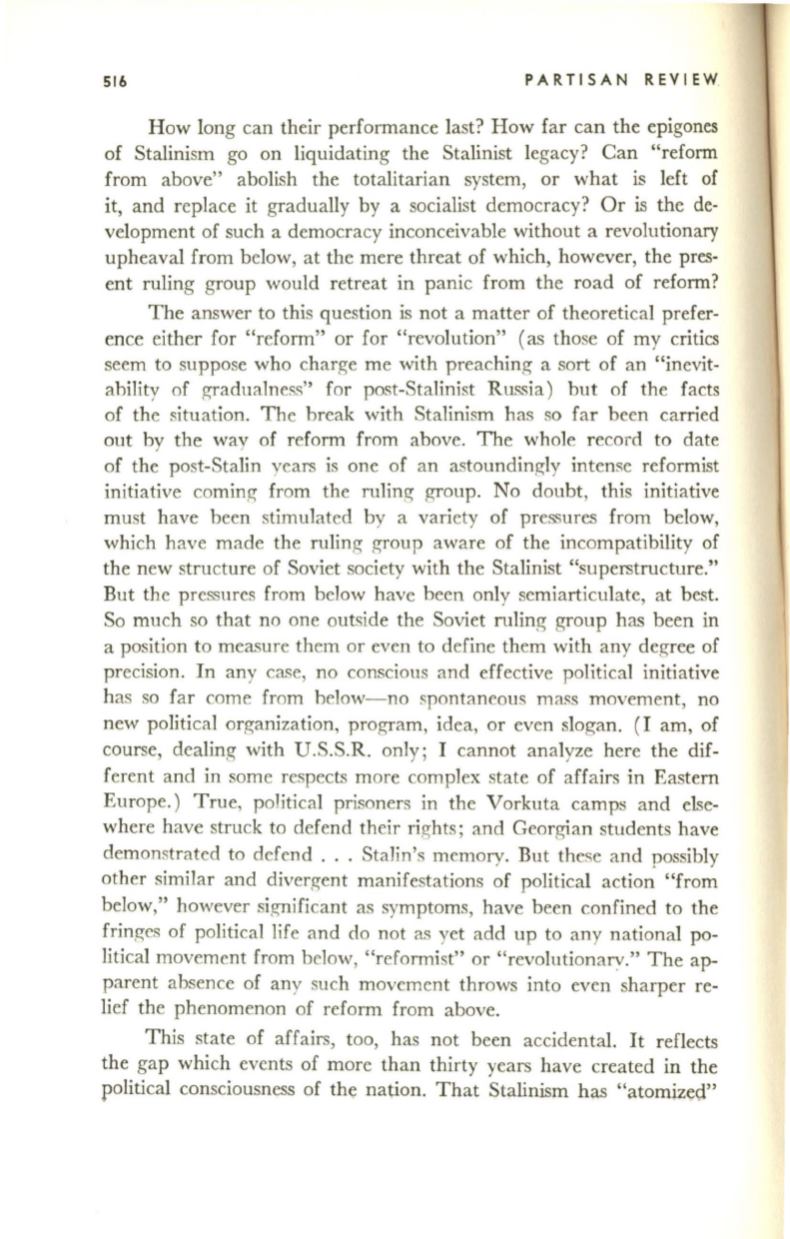
516
PARTISAN
REVIEW,
How long can their performance last? How far can the epigones
of Stalinism go on liquidating the Stalinist legacy? Can "reform
from above" abolish the totalitarian system, or what is left of
it, and replace it gradually by a socialist democracy? Or is the de–
velopment of such a democracy inconceivable without a revolutionary
upheaval from below, at the mere threat of which, however, the pres–
ent ruling group would retreat in panic from the road of reform?
The answer to this question is not a matter of theoretical prefer–
ence either for "reform" or for "revolution" (as those of my critics
seem to suppose who charge me with preaching a sort of an "inevit–
ability of gradualness" for post-Stalinist Russia) but of the facts
of the situation. The break with Stalinism has so far been carried
out by the way of reform from above. The whole record to date
of the post-Stalin years is one of an astoundingly intense reformist
initiative coming from the ruling group. No doubt, this initiative
must have been stimulated by a variety of pressures from below,
which have made the ruling group aware of the incompatibility of
the new structure of Soviet society with the Stalinist "superstructure."
But the pressures from below have been only semiarticulate, at best.
So much so that no one outside the Soviet ruling group has been in
a position to measure them or even to define them with any degree of
precision. In any case, no conscious and effective political initiative
has so far come from below-no spontaneous mass movement, no
new political organization, program, idea, or even slogan. (I am, of
course, dealing with U.S.S.R. only; I cannot analyze here the dif–
ferent and in some respects more complex state of affairs in Eastern
Europe.) True, political prisoners in the Vorkuta camps and else–
where have struck to defend their rights; and Georgian students have
demonstrated to defend ... Stalin's memory. But these and possibly
other similar and divergent manifestations of political action "from
below," however significant as symptoms, have been confined to the
fringes of political life and do not as yet add up to any national po–
litical movement from below, "reformist" or "revolutionarv." The ap–
parent absence of any such movement throws into even sharper re–
lief the phenomenon of reform from above.
This state of affairs, too, has not been accidental. It reflects
the gap which events of more than thirty years have created in the
political consciousness of the nation. That Stalinism has "atomized"


